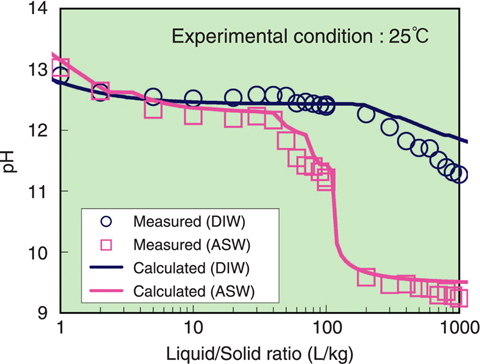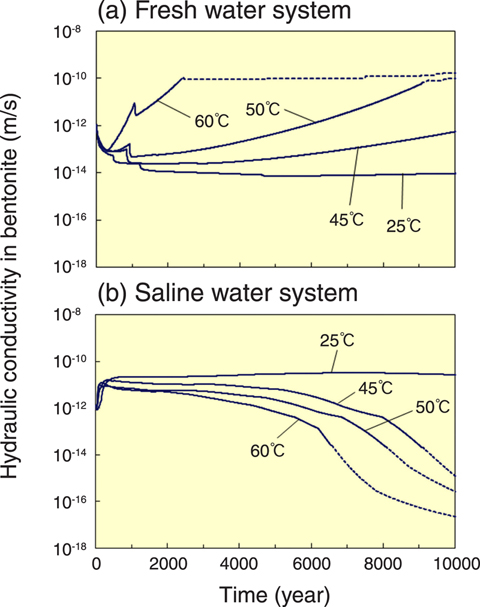
Fig.5-16 Verification of mineral model by alteration experiments

Fig.5-17 Change of hydraulic conductivity in bentonite-cement barrier system
In the Japanese high-level radioactive waste (HLW) disposal program, vitrified HLW is encapsulated in a steel container called overpack, and placed in a repository surrounded with bentonite clay material in a stable underground site. Bentonite prevents groundwater from intruding into the waste, and so it is necessary to estimate the long-term changes in the properties of bentonite, since it confines long-lived radionuclides.
The cement used in the repository likely generates an alkaline groundwater which dissolves montmorillonite, the main constituent of bentonite. Because the radionuclide confining property of the bentonite arises from montmorillonite, modeling the alterations of cement and montmorillonite is necessary to predict deterioration of the confinement performance. We performed laboratory experiments on alkaline components generated during long-term alteration of cement material and montmorillonite dissolution in those alkaline solutions, using compacted bentonite simulating the repository conditions, and then proposed models based on the results.
To verify safety of the repository, chemical reactions of cement-bentonite-groundwater systems were calculated using the models. Concurrent calculations of mass transport in cement and bentonite are needed because the parameters in the calculations are linked to each other. Verification is very important for such a coupled calculation model; we have been verifying it by comparing results of the model calculation with observations from laboratory experiments.
Groundwater is probably mixed with seawater at a repository in a coastal area in Japan. We focused on that situation and considered possible minerals generated in cement alteration by seawater in a secondary mineral generation model. The model was verified through alteration experiments with cement (Fig.5-16).
In addition, the model was used to predict the alteration of cement-bentonite systems over a 10000 year period. Searching into the calculation results revealed the great influence of temperature on the degree of alteration, and the complex effect of salinity concentration upon alteration behavior (Fig.5-17). This knowledge establishes key issues for long-term analysis of alteration.